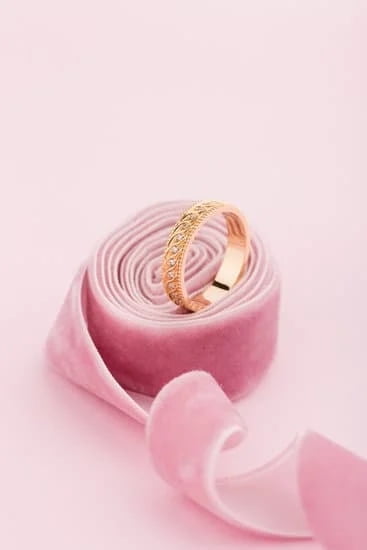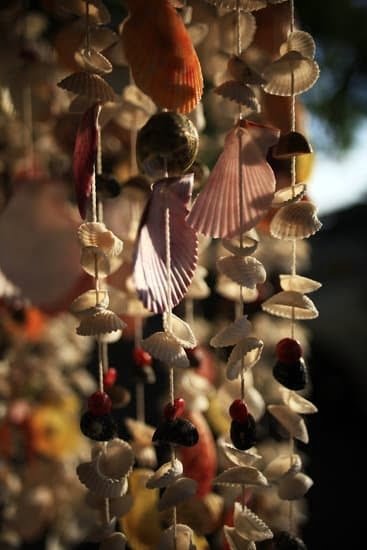Are you interested in learning how to tie knots for beaded jewelry? Whether you’re a beginner or an experienced jewelry maker, mastering the art of knot tying is essential for creating durable and visually appealing designs.
Proper knot tying not only ensures the longevity of your beaded jewelry but also adds a professional touch to your finished pieces. In this article, we will explore the significance of knot tying in beaded jewelry making and provide step-by-step instructions on basic and advanced knot tying techniques.
Understanding the importance of proper knot tying in beaded jewelry making is crucial for any designer or hobbyist. It not only enhances the overall aesthetics of the piece but also ensures that the beads are securely held together.
Unraveling or breakage can occur without secure knots, which can lead to frustration and disappointment. Additionally, knowing how to tie knots properly allows for greater flexibility and creativity in your designs, as you can confidently incorporate various beads and materials with different textures and sizes.
In order to get started with knot tying for beaded jewelry, it’s important to have the right supplies on hand. From cords and threads to specialized tools, having the essential materials will make the process smoother and more enjoyable. After understanding the significance of proper knot tying in beaded jewelry making, we will delve into the basic knot tying techniques to equip you with the necessary skills for creating beautiful pieces.
Essential Knot Tying Supplies
When it comes to making beaded jewelry, proper knot tying is crucial for ensuring the durability and longevity of the finished pieces. Before getting started on any beaded jewelry project, it’s important to gather all the essential knot tying supplies. Here is a list of materials needed for knot tying in beaded jewelry making:
1. Beads: The main attraction of any beaded jewelry piece, beads come in various shapes, sizes, and materials such as glass, crystal, metal, or gemstones.
2. Cord or Thread: Choosing the right cord or thread is essential for knot tying in beaded jewelry. It should be strong enough to hold the beads securely in place and flexible enough to maneuver through the beads with ease.
3. Scissors: A good pair of sharp scissors is necessary for cutting the cord or thread to the desired length without fraying.
4. Clipboard or Macrame Board: Having a clipboard or macrame board will help keep your work secure and organized as you tie knots and arrange beads.
5. Tweezers or Awl: These tools can be useful for threading small beads onto cord or thread, especially when using multiple strands.
6. Glue (optional): Some beadworkers choose to use a small amount of jewelry glue to secure their knots for added durability.
By having these essential knot tying supplies on hand, you’ll be well-prepared to begin creating beautiful beaded jewelry pieces with skill and confidence.
| Essential Knot Tying Supplies | List of Materials Needed |
|---|---|
| Beads | Cord or Thread |
| Scissors | Clipboard or Macrame Board |
| Tweezers or Awl | Glue (optional) |
Basic Knot Tying Techniques
Overhand Knot
The overhand knot is one of the most basic and essential knots for beaded jewelry making. To tie an overhand knot, start by creating a loop with the cord or thread. Then, pass the end of the cord through the loop and tighten the knot. This creates a simple and effective knot that can be used to secure beads in place or to create a starting point for more complex knot patterns.
Square Knot
The square knot, also known as a reef knot, is another important knot for beaded jewelry making. To tie a square knot, cross the left end of the cord over the right end, then bring it under and through the right side. Next, cross the right end over the left end, and bring it under and through the left side.
Tighten the knot to form a symmetrical square shape. The square knot is commonly used for joining two pieces of cord or thread together in beaded jewelry designs.
Sliding Knot
The sliding knot is a versatile technique that allows for adjustable lengths in beaded jewelry pieces such as bracelets and necklaces. To create a sliding knot, begin by making a loop with one end of the cord, then wrap the other end around it multiple times before pulling it through to create a sliding closure. This type of knot is great for creating custom-fit jewelry that can easily be adjusted to different wrist or neck sizes.
Learning how to tie knots for beaded jewelry is an essential skill for any jewelry maker who wants to create high-quality and durable pieces. By mastering these basic techniques, you’ll be equipped to start exploring more intricate designs and experimenting with unique applications of knot tying in your beaded jewelry creations.
Advanced Knot Tying Techniques
When it comes to creating intricate beaded jewelry designs, mastering advanced knot tying techniques is essential. These methods allow you to create unique and complex patterns, adding an extra level of detail to your creations. In this section, we will explore some advanced knot tying techniques that can take your beaded jewelry to the next level.
Macramé Knots
Macramé knots are a popular choice for creating intricate and decorative patterns in beaded jewelry. The square knot, spiral knot, and double half hitch knot are just a few examples of macramé knots that can be used to add visual interest and texture to your designs. By combining different types of macramé knots with varying bead sizes and colors, you can create stunning statement pieces that are sure to stand out.
Sliding Knots
Sliding knots are perfect for adjustable bracelets and necklaces, allowing the wearer to easily customize the length of their jewelry. To create a sliding knot, you will need to use a specific technique that allows the knot to move along the cord freely while maintaining its position when not being adjusted. This technique involves looping the cord around itself in a strategic way to create a secure sliding mechanism.
Chinese Button Knots
Chinese button knots are not only functional but also add a beautiful decorative element to beaded jewelry. These knots are often used as closures for bracelets and necklaces, giving them a polished and professional finish. Learning how to tie Chinese button knots can open up a world of possibilities for incorporating unique closures into your beaded jewelry designs.
By mastering these advanced knot tying techniques, you will have the skills needed to create truly exceptional beaded jewelry pieces. Experiment with different combinations of knots, beads, and cords to discover the endless design possibilities available when using these advanced techniques for creating intricate beaded jewelry designs.
Troubleshooting Knot Tying Issues
When creating beaded jewelry, it’s crucial to master the art of knot tying to ensure the durability and longevity of your pieces. However, even seasoned jewelry makers can encounter some common problems when tying knots. Here are some troubleshooting tips to help you navigate through these issues:
- Knot Slipping: One of the most frustrating problems when tying knots in beaded jewelry is having them slip or come loose over time. To prevent this, make sure to pull the knot tightly and consider using a dab of clear nail polish or glue to secure the knot in place.
- Knot Tangling: Sometimes, knots can become tangled or twisted as you work on your beaded jewelry. To avoid this, try working with shorter lengths of thread and take breaks to untangle any knots that may have formed before they become too tight.
- Difficulty Tying Small Knots: Working with tiny beads and delicate threads can make it challenging to tie small knots. If you’re struggling with this issue, consider using a pair of tweezers or a magnifying glass to get a better grip and view while tying the knots.
As you continue to practice how to tie knots for beaded jewelry, keep in mind that encountering these issues is all part of the learning process. By being aware of these common problems and their solutions, you’ll be better equipped to troubleshoot any knot-tying issues that may arise during your jewelry making journey. Remember that patience and practice are key in perfecting your knot-tying skills.
Additional Tips for Troubleshooting Knot Tying Issues
- Use high-quality threads and cords that are less prone to tangling and slipping.
- Avoid excessive tension when pulling the knots tight as it may cause them to break or stretch over time.
- If you’re still struggling with knot tying, don’t hesitate to seek out tutorials or workshops specifically focused on mastering this important skill for beaded jewelry making.
Creative Applications
Creating beaded jewelry involves not only selecting the right beads and materials but also mastering the art of knot tying. In this section, we will explore some creative applications and unique ways to utilize knot tying in beaded jewelry design. Whether you are an experienced jewelry maker or just starting out, these creative ideas will inspire you to take your knot tying skills to the next level.
One way to creatively utilize knot tying in beaded jewelry design is by incorporating macramé techniques. Macramé involves using various knots to create intricate patterns and designs with cords or threads. By integrating macramé into your beaded jewelry designs, you can add a unique and stylish twist to your pieces. This technique allows for endless creativity, as you can experiment with different knots and patterns to achieve stunning results.
Another creative application of knot tying in beaded jewelry design is creating adjustable closures. Instead of using traditional clasps, consider incorporating sliding knots or adjustable closures that allow the wearer to easily modify the length of the jewelry piece. This not only adds functionality to your designs but also makes them more versatile and appealing to a wider audience.
Additionally, knot tying can be used to showcase focal beads or pendants in a distinctive way. By strategically placing knots around a focal bead or pendant, you can create a visually striking effect that highlights the centerpiece of your beaded jewelry. This technique adds visual interest and draws attention to the focal element of the design, making it a standout feature of the piece.
| Knot Type | Description |
|---|---|
| Overhand Knot | A simple knot that is often used as a starting point for other more complex knots |
| Square Knot | A decorative knot commonly used in macramé that consists of two overhand knots |
| Sliding Knot | An adjustable closure created by using a series of special knots that allow for easy length adjustment |
Tips for Choosing the Right Knots
When selecting knots for different types of beaded jewelry, there are several factors to consider to ensure that the finished product is not only aesthetically pleasing but also durable and long-lasting. The choice of knots can vary depending on the type of beads being used, the intended design, and the overall style of the jewelry piece. Here are some tips for choosing the right knots for different types of beaded jewelry:
- Bead Size and Shape: The size and shape of the beads will affect the type of knot that is most suitable for the jewelry piece. Larger beads may require more space between each knot, while smaller or irregularly shaped beads may need tighter and more secure knots.
- Stringing Material: The material used for stringing the beads, whether it’s thread, wire, or cord, will play a significant role in determining which knots are appropriate. For example, certain knots may work better with flexible wire than with silk thread.
- Jewelry Style: Consider the overall style of the jewelry piece when choosing knots. For example, a delicate and dainty necklace may benefit from finer knots, while a bohemian-inspired bracelet might call for more elaborate knot designs.
Taking these factors into account when selecting knots for beaded jewelry will contribute to the overall quality and craftsmanship of the finished piece.
Remember that practice makes perfect when it comes to mastering knot tying for beaded jewelry making. Experimenting with different types of knots and stringing materials will help you develop a deeper understanding of how these elements work together to create beautiful and durable pieces.
By paying attention to bead size and shape, stringing material, and overall jewelry style when choosing knots for your designs, you’ll be able to create stunning beaded jewelry that stands out for its craftsmanship and attention to detail.
Conclusion
In conclusion, mastering the art of knot tying for beaded jewelry making is essential for creating beautiful and durable pieces. As discussed in this article, using the right supplies and learning basic and advanced techniques can help you achieve professional-looking results. Remember that practice makes perfect, so don’t be discouraged if you encounter difficulties at first. With patience and dedication, you can improve your knot tying skills and create stunning beaded jewelry designs.
It’s important to keep in mind that troubleshooting knot tying issues is a normal part of the learning process. Don’t hesitate to seek out resources such as tutorials, books, or classes to further expand your knowledge and enhance your skills. Additionally, exploring creative applications of knot tying in jewelry design can lead to unique and innovative pieces that showcase your individual style and craftsmanship.
As you continue on your journey of creating beaded jewelry, remember to carefully consider which knots are best suited for different types of projects. Each knot has its own strengths and limitations, so being knowledgeable about the various options will enable you to make informed decisions based on the specific requirements of each piece. By staying persistent and open-minded, you’ll be able to elevate your craft and produce exceptional beaded jewelry with beautifully tied knots.
Frequently Asked Questions
How Do You Tie a Knot When Beading?
When beading, it’s important to tie a secure knot to prevent the beads from falling off. One common method is to double the thread and thread it back through the last few beads, creating a loop. Then, pass the needle through this loop and tighten to form a knot.
How Do You Secure the Knot at the End of a Beaded Bracelet?
To secure the knot at the end of a beaded bracelet, first tie a regular knot as close to the last bead as possible. Then, dab a small amount of clear drying glue on the knot to further secure it and let it dry completely before trimming any excess thread.
How Do You Tie a Strong Knot for Jewelry?
Tying a strong knot for jewelry requires using techniques like the surgeon’s knot or square knot that involve doubling or tripling the thread to create extra security. Additionally, using an adhesive like clear drying glue can help reinforce the knot and prevent it from coming undone.

Welcome to my jewelry blog! My name is Sarah and I am the owner of this blog.
I love making jewelry and sharing my creations with others.
So whether you’re someone who loves wearing jewelry yourself or simply enjoys learning about it, be sure to check out my blog for insightful posts on everything related to this exciting topic!





